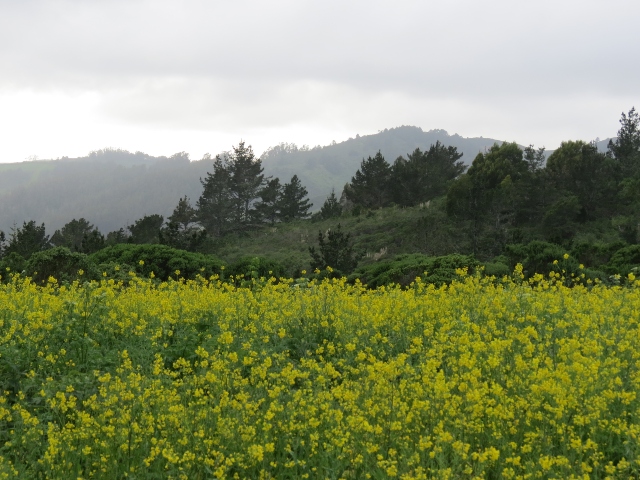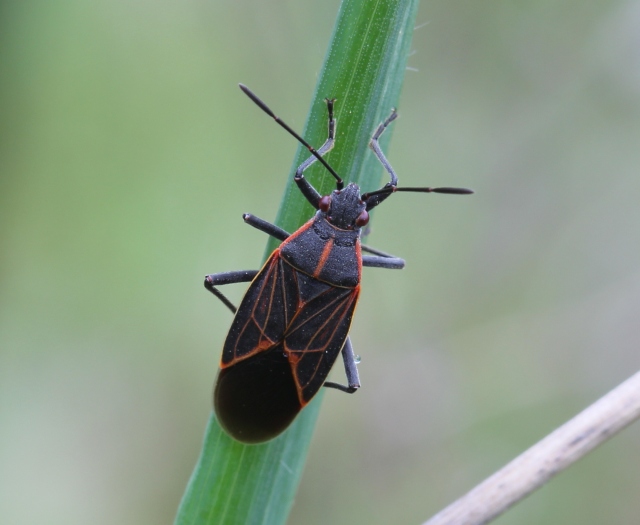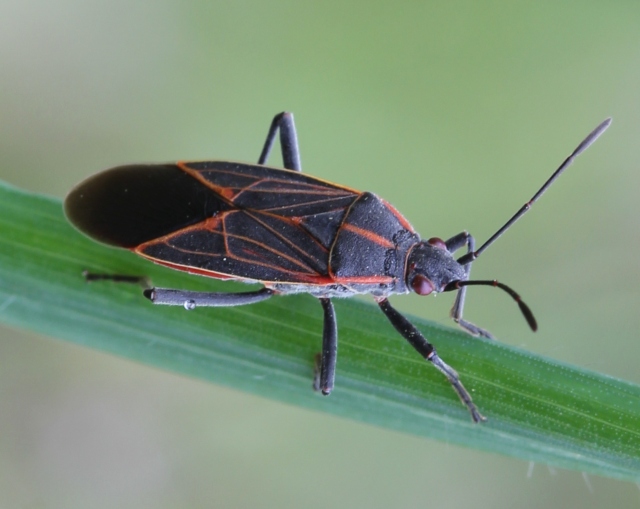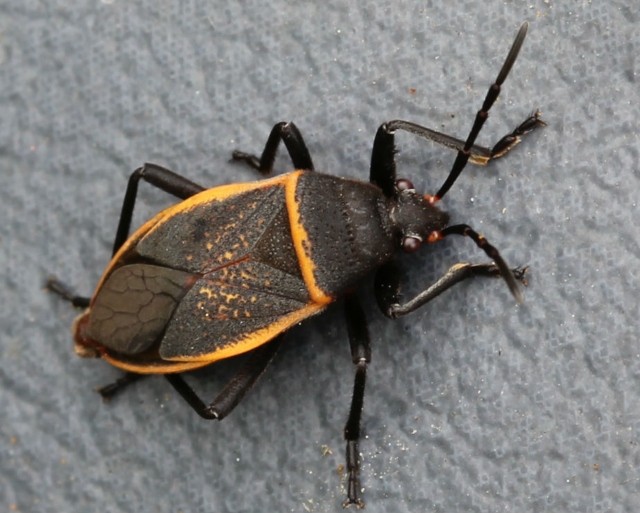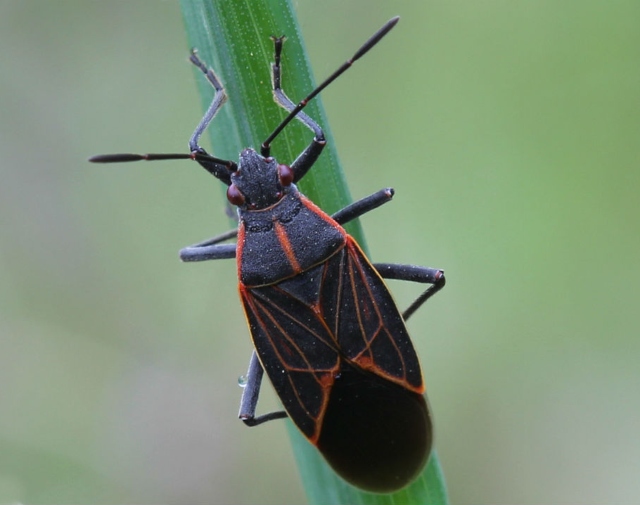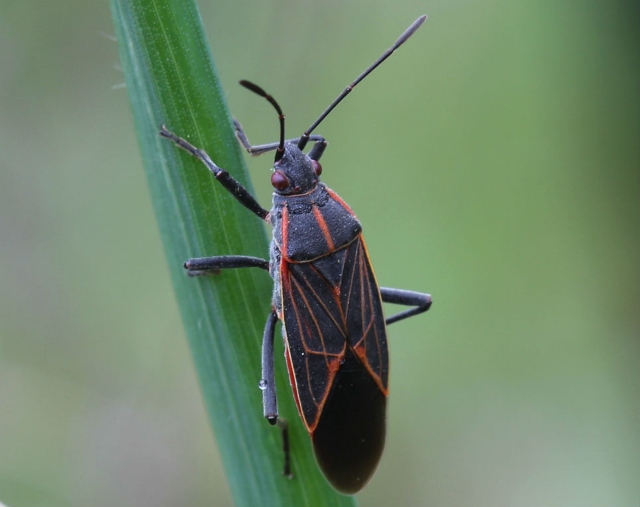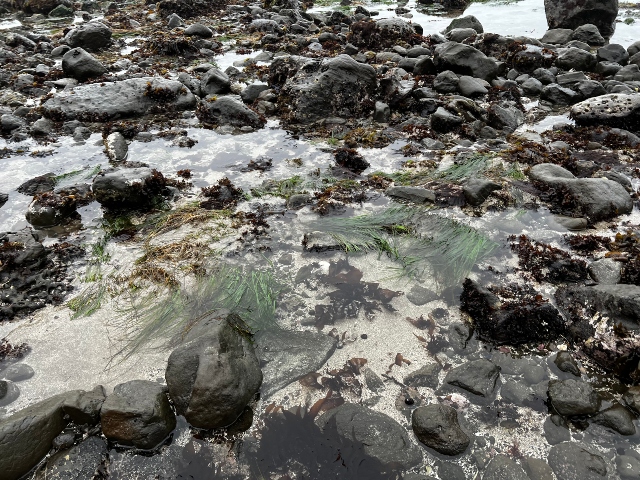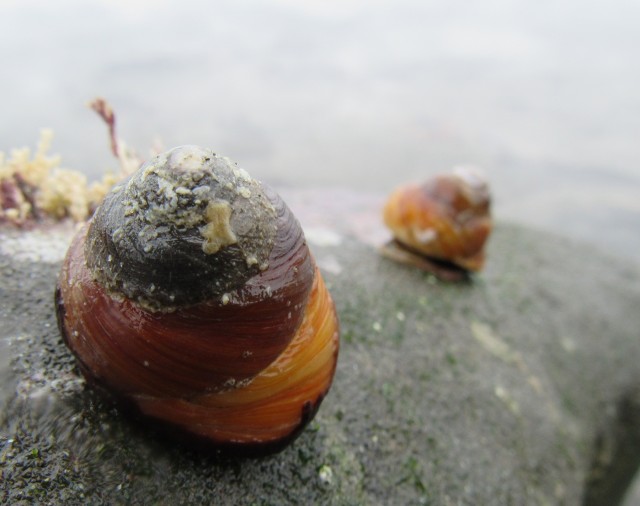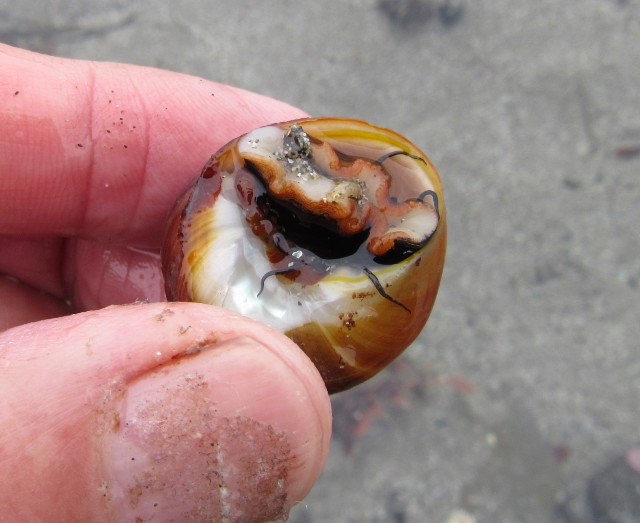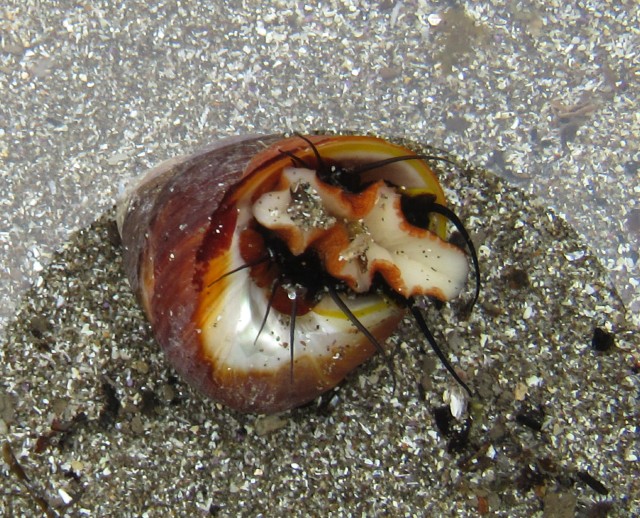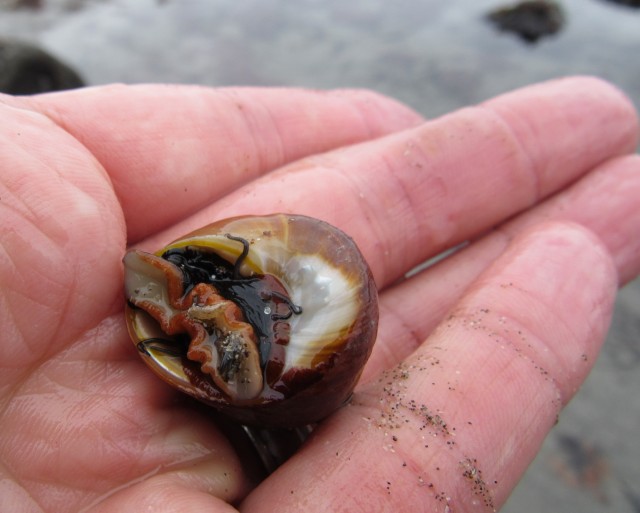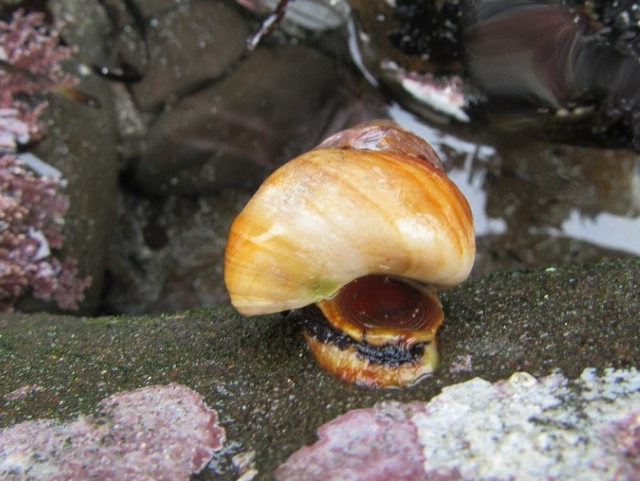This interesting insect is native to much of North America and occurs from British Columbia, Canada, south to California and east to Nevada, Utah and Texas. It can be found wherever its principle host Boxelder, occurs.
The adult Western Boxelder Bug is around 1/2 inch long, and about a third that in width. Its topside is grayish-black and has several reddish lines running across it. Its prominent red veins on its wings are a good way to differentiate it from the Common Boxelder Bug.
The Boxelder is a small to medium sized tree that is the most widely distributed of the North American Maples. Boxelder Bugs generally confine their feeding to seeds or fruits and, other than reducing the quantity of viable seed or damaging fruits, they do not injure their host plants.
During certain times of the year boxelder bugs cluster together in large groups while sunning themselves on warm surfaces (rocks, shrubs, trees, and man-made structures) near their host tree.
Belonging to an order of insects known as Hemiptera, all Hemiptera have piercing-sucking mouthparts and outer wings that are half-leathery and half membranous, which is the origin of the order name meaning “half-wing.” Most insects in this order are plant feeders.
Western Boxelder Bugs survive the Winter as adults in protected places around home landscapes and inside unheated parts of buildings. They sometimes become active outdoors during warm sunny days in late Winter. But their active season doesn’t really begin until temperatures regularly reach 70 degrees and their host trees begin having leaves.

